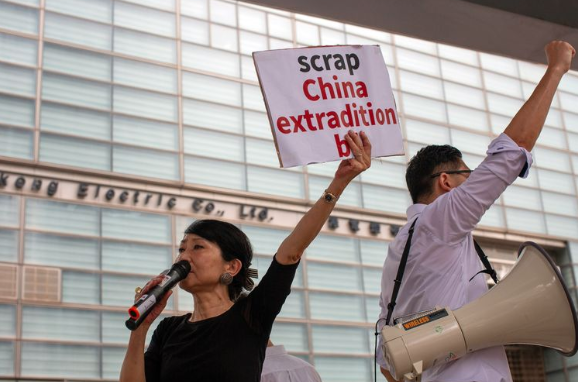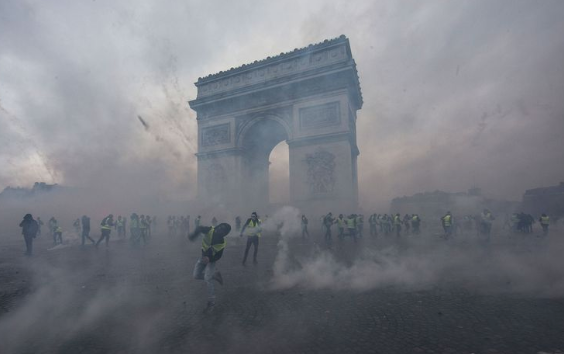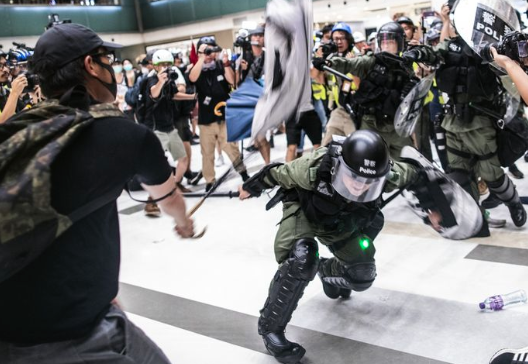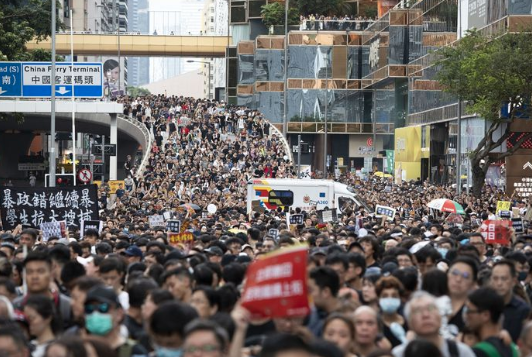Similarities are starting to be drawn between Hong Kong’s mass rallies and France’s Yellow Vest movement: according to Bloomberg, both are “hard to pin down” and both are evolving. It’s a “recipe for trouble” for each country’s respective government.
The Hong Kong protests that started against legislation that would enable extradition back to the mainland have now grown to include cries for Lam’s resignation and investigations into police abuse during the protests themselves.
One anonymous 28 year protester in Hong Kong said:
“We have to continue to protest until our demands are met. There is no end in sight.”
Hong Kong is bracing for more protests on Friday while Chief Executive Carrie Lam tries to decide whether or not to make concessions, like French President Emmanuel Macron did, to take the wind out of the sails of some of the protests.
Hong Kong opposition lawmaker Claudia Mo said about the French protesters:
“We find them very inspiring. The most direct similarity is the continuation of actions. The most dissimilar is the looting. I just cannot imagine anyone looting shops, cracking cars or burning taxis to make a point—that’s not Hong Kong.”
Even though Lam shelved the bill that spurred the protests in March to begin with, rallies have evolved and expanded to additional grievances. Both Hong Kong and France are not strangers to street protests. Student protests in France in 1968 “defined the era” and the Yellow Vest protests drew comparisons with their intensity.
The movement was organized by social media groups and mobilized hundreds of thousands of people each Saturday to protest fuel prices, before evolving into protests on the French state. Fringe elements of the group engaged in burning cars, looting and torching shops. The Arc de Triomphe was even vandalized during riot battles with police.
In Hong Kong last week, protesters targeted the liaison office of China’s central government in the center of the city and, as we reported, Triad members attacked pro-democracy protesters in a train station.
Kenneth Yeung, a doctoral student from Hong Kong with a focus on social movements at the Université Paris Diderot said: “It’s about the pent-up anger that’s accumulated in the five years since Occupy. Today, even those who have never participated in any movements are thinking they must do their part.”
The lack of unified leadership between both protests is an element that could be prolonging them. Leaderless movements “adapt and evolve” using encrypted messaging apps.
“The lack of a leader is the reason the movement is still continuing,” Yeung said.
France’s protests differ from Hong Kong’s in terms of motivation. France’s protests started as “an anti-globalization movement that saw in Macron a symbol of an out-of-touch elite that had let them down.” Hong Kong’s protests center around China, the territory’s China-picked leader, Lam.
Macron eventually gave in, addressed the nation, and initiated a platform where citizens could vent their frustrations. On December 10 he announced $11.1 billion in tax cuts and increased pension and welfare spending, in addition to organizing a national debate inclusive of 10,500 town hall meetings. His response helped quell the movement.
Lam doesn’t have such flexibility, as she must appease both her citizens – and Beijing.
James Shields, professor of French politics at the University of Warwick said: “Most of those people now stay home. But their yellow vests are still in their cars, ready to be worn again if Macron presses on with a reform agenda that hits ordinary French citizens in their pockets.”
via ZeroHedge News https://ift.tt/310rl9b Tyler Durden



